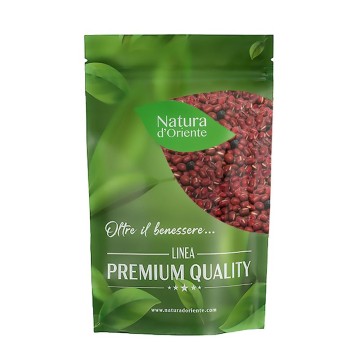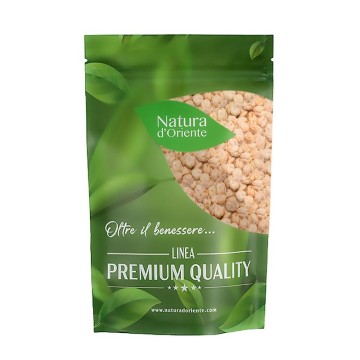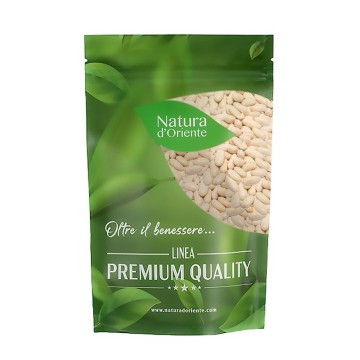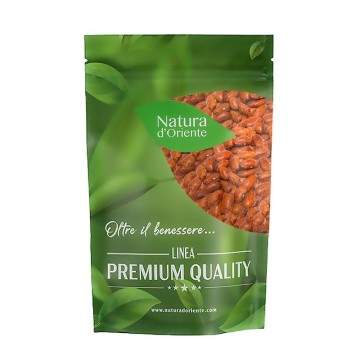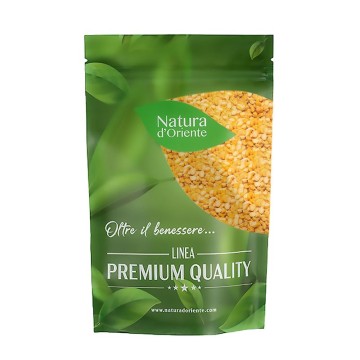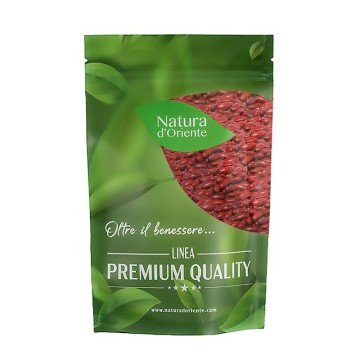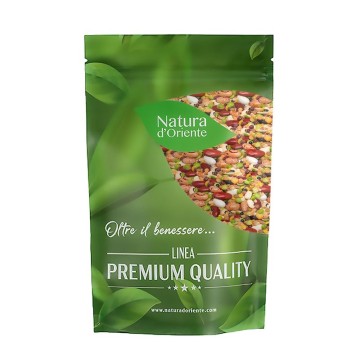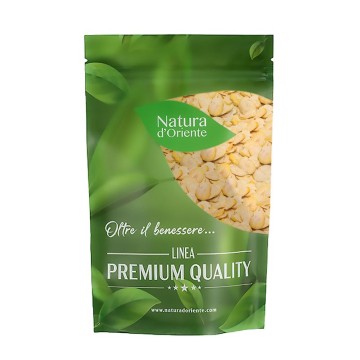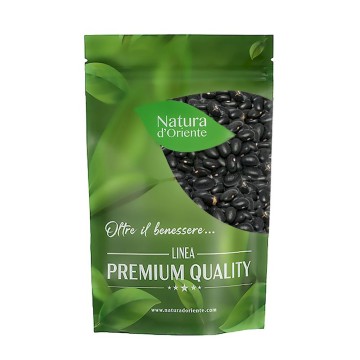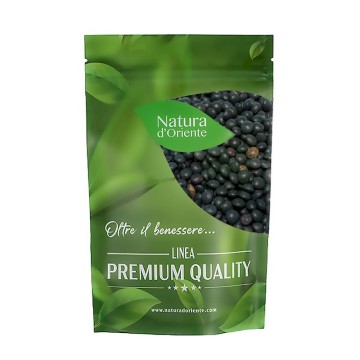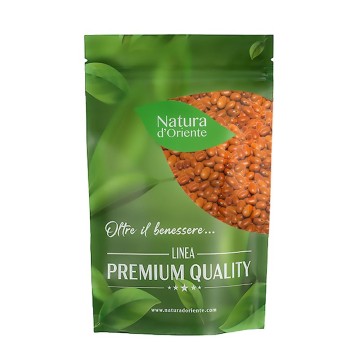The peeled red lentils are legumes considered beneficial for their contribution not only of proteins, but also of other beneficial elements for our health. With the growing awareness of the benefits of a plant-based diet, red lentils are increasingly in demand on the table ...
Red lentils: properties and benefits
Among several types of lentils, red lentils are highly nutritious and flavorful , making them an ideal choice for healthy everyday cooking.
It is a high protein food, and also an excellent alternative to refined flour, for those looking for a nutritious gluten-free pasta made of red lentils.
As already mentioned, red lentils are a good source of vegetable protein for vegans and vegetarians. A valid alternative to meat or fish, combined with cereals, given that a third of the calories of these legumes come from proteins.
In addition, they enhance their properties with an excellent fiber content , useful for the well-being of digestion, in an anti-constipation function.
Lentils are particularly rich in prebiotic fiber, capable of protecting the digestive function and feeding the beneficial intestinal bacteria, which are so important for our health.
Red lentils are a good source of essential minerals such as iron and magnesium.
Iron which plays an important role in the transport of oxygen in the blood and in the creation of energy. Indeed, iron deficiency is one of the main causes of tiredness and fatigue; for this reason, red lentils are a good ingredient especially in the diet of pregnant or menstrual women, for children and adolescents who are at risk of iron deficiency.
These legumes are also a good source of vitamins, especially folate, which is a type of vitamin B.
Being rich in fiber, magnesium and folate, red lentils help support the well-being of the cardiovascular system. Magnesium improves the flow of blood, oxygen and nutrients throughout the body. Folate helps prevent damage to artery walls. The fiber content in red lentils helps maintain healthy cholesterol levels in the body.
The abundance of essential vitamins, antioxidants and minerals in red lentils supports the body's immune system. Antioxidants, protective plant compounds called phenols, also help fight free radicals and minimize cell and tissue damage, thus acting as an anti-aging agent that promotes healthy skin.
In terms of diet, red lentils have a low glycemic index and are rich in dietary fiber. The combination of these two factors avoids sudden spikes in blood sugar. This promotes stable blood sugar levels.
The red lentil, in fact, provides complex carbohydrates, which take longer to break down and provide longer lasting energy in the body.
Origins and History of cultivation
Lentils could be the oldest cultivated legume in history, given that some archaeological excavations date them as early as 7,000 BC. in Asia, then in Turkey, and in the Egyptian tombs. They spread, in fact, from southwestern Asia to the Mediterranean world, and are also mentioned in the Bible.
The name lentil derives from the Latin word for the leguminous plant, the Lens, which perhaps gave its name to one of the most prominent noble families in ancient Rome, the Lentuli.
The red lentil comes from Egypt, but according to a legend it was discovered about 4000 years ago in the territories of Assyria. A legend tells of a peasant girl, Akubu, who discovered lentils among the plants, which they dried and then boiled.
Beyond the legend, we know that the red lentil is known as Egyptian lentil or Masoor Dal, from the territory from which it derives. The hulled version derives from the type of brownish-red whole lentils, which are deprived of the skin (seed coating); the remaining orange-red seed (called the cotyledon) is then divided into two halves.
In its dried and decor formticata the lentil turns a beautiful salmon pink, and then golden yellow when cooked - and there it demonstrates its delicate and subtly sweet flavor.
It is an important food source for millions of people around the world, and in India, dhal or dal lentil is used in soups, consumed in almost every meal .
In South Asia, red lentils are used in curry, while in many cultures lentil flour mixes with other flours to add flavor and nutrients.
Today as a crop, the majority of world lentil production comes from Canada and India (together they account for about 58% of the world total).
The types of hulled red lentils we offer are common in Canada and include the Crimson, Redcap, Redberry, Robin, Blaze, Rouleau and Rosetown varieties.
Canada has several processing plants, capable of peeling and sorting both red and green types of lentils for the world market.
Plant and Fruit
The lentil plant (Lens culinaris or Lens esculenta) is the one that gives us the edible legume we know. It is an annual plant about 40-50cm tall, the seeds of which grow in pods, usually with two seeds in each. The Lens genus is part of the Faboideae subfamily and the family of flowering plants Fabaceae and Fabales - legume or bean plants.
The lentil is an underground plant, because the seed cotyledons remain in the soil. For this reason, it is less vulnerable to cold, wind erosion and insect attack.
The flowers are small, white, pink, purple or pale blue. The pods are about 1.5 cm long, slightly swollen as each of them contains two seeds, about 0.5 cm in diameter. The typical small lens shape of the seeds, in the red lentil is almost flat.
The different varieties of lentils grown are different from each other in size, color of leaves, flowers and seeds. Among the most famous red ones, there are Masoor Dal lentils and petite Crimson (shelled Masoor lentils).
Nutritional values of red lentils
These legumes are packed with beneficial nutrients. Analyzing 100 grams of hulled red lentils, we know that they give 321 kcal , as well as low fat (1.6%), protein (26%), low carbohydrates and fiber (about 10%).
Among the mineral salts are present in red lentils, moderate levels of calcium (about 51 mg / 100 g), iron (about 7.5 mg), potassium (about 570 mg) and magnesium (about 120 mg).
By consuming 100 grams of peeled red lentils, you assimilate: vitamin A (about 3 mg) and good doses of folate - vitamin B9 (about 200 μg).
Hulled lentils contain slightly less fiber than the unpeeled legume, but their digestion is easier.
How to consume peeled red lentils in the kitchen
Lentils without peel are ideal in the kitchen, because they are quick cooking and easy to digest, so they can quickly become an ingredient for soups. their orange tone turns yellow after cooking, also giving beautiful visual effects as a side dish.
The peeled lentils cook quickly and are very tender - they flake easily during cooking. This is why they are suitable for creating creams and do not need to be soaked.
They are less tasty than other legumes, and for this reason they are suitable for some sweet dishes or with a neutral flavor.
They are also suitable for cold vegetable salads, and for the creation of burgers or vegetarian meatballs.
Lentil flour can be used to make quick leavened bread, muffins, cookies and pancakes, while lentil puree is a great addition to muffin and bread recipes, adding fibers, proteins and the right humidity.
Recipe with hulled red lentils: Lentil soup and coconut milk
Ingredients : ½ cup of peeled red lentils - 1 teaspoon of ground turmeric - 1 teaspoon of ground coriander - 3 cups of water - 1 tablespoon of broth chicken powder - ½ cup of coconut milk
<p s

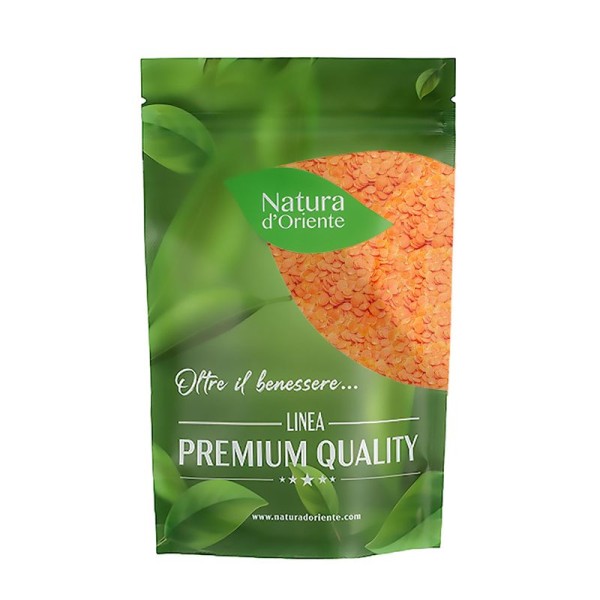







 No reward points for this product.
No reward points for this product.
